Pharaoh Psusennes I Buried In The Silver Coffin Inlaid With Gold
A. Sutherland - AncientPages.com - Tanis (dubbed "Luxor of the North"), an ancient area in the Nile Delta, Egypt, was an early subject of the archaeologists' interest. The city's name was already well known as Soan (biblical Zoan).
Among many tombs of Tanis, there was one that belonged to Psusennes I, the third pharaoh of the 21st Dynasty who ruled from Tanis between 1047 – 1001 BC.
His name Psusennes (in Greek, Pasibkhanu ) or Egyptian Hor-Pasebakhaenniut means "The Star Appearing in the City" and his throne name was translated to ”Great are the Manifestations of Ra, chosen of Amun." Psusennes I was the third king of the Twenty-first Dynasty and is probably the best known of all this dynasty's kings.
In February 1939, the French archaeologist Pierre Montet (1885 – 1966) and his workers discovered an underground chamber blocked by a stone.
It was a tomb consisting of four decorated limestone chambers containing sarcophagi belonging Osorkon III and Prince Hornakht and the remnants of Takelot II’s and Osorkon I’s tombs.
In 1940, Montet and his workers continued the excavations at the ancient capital of Tanis and discovered one complete, undisturbed tomb.
The tomb belonged to the 21st Dynasty king Psusennes I, as well as the tombs of the Pharaohs Osorkon I, Takelot II, Sheshonq III, and others in a royal necropolis at Tanis.
The chamber was opened by moving the door block of granite.
In a narrow room, there was enough space for a decorated coffin made of rose granite.
At the feet of the sarcophagus stood a canopic jar, which contained the king's internal organs and vessels in gold and silver. The king's body was covered with amulets, precious and semi-precious stones.
Psusennes' mummy - destroyed due to Lower Egypt's moist location - was placed inside a coffin of silver, which was more valuable than gold as it had to be imported to Egypt.
This coffin was then placed in a black granite sarcophagus, which was in turn placed in a red granite outer sarcophagus.
Especially notable amongst the items discovered in the tomb was Psusennes' solid gold mask, which was found completely intact.
The mask – considered one of the treasure masterpieces - was made of gold and lapis lazuli and held inlays of black and white glass for the eyes and eyebrows of the object. It has a maximum width and height of 38 cm and 48 cm respectively.
Archaeologists discovered that the pharaoh's "fingers and toes had been encased in gold stalls, and he was buried with gold sandals on his feet. The finger stalls are the most elaborate ever found, with sculpted fingernails. Each finger wore an elaborate ring of gold and lapis lazuli or some other semiprecious stone.
The intact tomb of pharaoh Psusennes I can only be compared to Tutankhamun's and it testifies that Psusennes I had a rich funeral.
Written by – A. Sutherland AncientPages.com Staff Writer
Copyright © AncientPages.com All rights reserved. This material may not be published, broadcast, rewritten or redistributed in whole or part without the express written permission of AncientPages.com
Expand for referencesReferences:
More From Ancient Pages
-
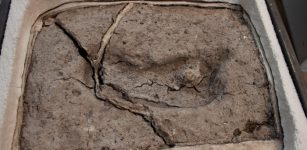 Discovery Of Oldest Human Footprint In The Americas Can Re-Write History
Archaeology | Apr 30, 2019
Discovery Of Oldest Human Footprint In The Americas Can Re-Write History
Archaeology | Apr 30, 2019 -
 Zerzura – Lost Ancient Sahara Oasis Guarded By Black Giants
Featured Stories | Jun 10, 2020
Zerzura – Lost Ancient Sahara Oasis Guarded By Black Giants
Featured Stories | Jun 10, 2020 -
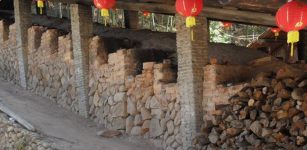 Ceramics Are Telling The Story Of 14th Century Chinese Trade
News | Jun 28, 2023
Ceramics Are Telling The Story Of 14th Century Chinese Trade
News | Jun 28, 2023 -
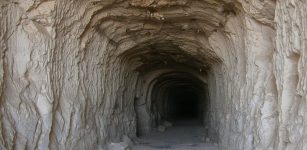 Ancient Superhighways: 12,000-Year-Old Massive Underground Tunnels From Scotland To Turkey
Featured Stories | Jul 19, 2015
Ancient Superhighways: 12,000-Year-Old Massive Underground Tunnels From Scotland To Turkey
Featured Stories | Jul 19, 2015 -
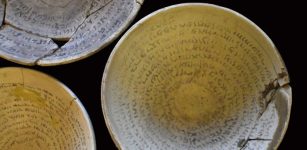 Ancient Magical Bowls Inscribed With Spells And Other Rare Artifacts Seized In Jerusalem Raid
Archaeology | Mar 14, 2022
Ancient Magical Bowls Inscribed With Spells And Other Rare Artifacts Seized In Jerusalem Raid
Archaeology | Mar 14, 2022 -
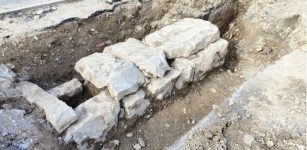 Mysterious Ancient Stone Structure Discovered In Torreano, Italy
Archaeology | Mar 29, 2023
Mysterious Ancient Stone Structure Discovered In Torreano, Italy
Archaeology | Mar 29, 2023 -
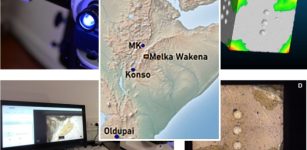 Acheulian Culture Of Ethiopian Highlands And Their Prehistoric Tool Selection To Make Society’s Life Easier
Archaeology | Jan 10, 2025
Acheulian Culture Of Ethiopian Highlands And Their Prehistoric Tool Selection To Make Society’s Life Easier
Archaeology | Jan 10, 2025 -
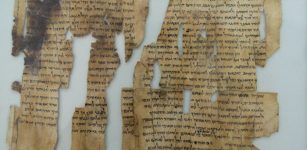 Ancient Secrets Of Mysterious Dead Sea Scrolls And Eastern Papyri Revealed By Handwriting Analysis
Archaeology | Oct 18, 2022
Ancient Secrets Of Mysterious Dead Sea Scrolls And Eastern Papyri Revealed By Handwriting Analysis
Archaeology | Oct 18, 2022 -
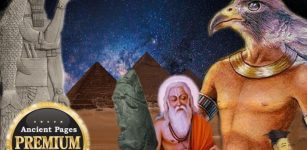 Sacred Ancient Texts Reveal Who Really Aligned The Oldest Monuments To The Stars
Ancient Mysteries | May 26, 2018
Sacred Ancient Texts Reveal Who Really Aligned The Oldest Monuments To The Stars
Ancient Mysteries | May 26, 2018 -
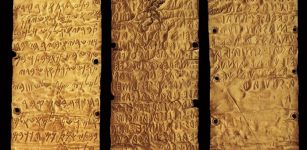 Pyrgi Gold Tablets: A Rare Ancient Bilingual Treasure
Artifacts | Nov 23, 2018
Pyrgi Gold Tablets: A Rare Ancient Bilingual Treasure
Artifacts | Nov 23, 2018 -
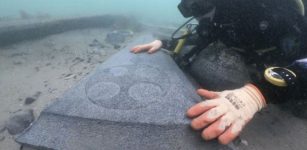 Extremely Rare English Medieval Shipwreck With Fascinating Cargo Discovered In Poole Bay, Dorset
Archaeology | Jul 23, 2022
Extremely Rare English Medieval Shipwreck With Fascinating Cargo Discovered In Poole Bay, Dorset
Archaeology | Jul 23, 2022 -
 Ancus Marcius: Semi-Legendary Fourth King Of Rome Obliged To Make War To Defend And Expend Territories
Featured Stories | Jul 12, 2019
Ancus Marcius: Semi-Legendary Fourth King Of Rome Obliged To Make War To Defend And Expend Territories
Featured Stories | Jul 12, 2019 -
 On This Day In History: Tsar Peter The Great Opens New Chapter in Russia’s History – On Mar 19, 1697
News | Mar 19, 2017
On This Day In History: Tsar Peter The Great Opens New Chapter in Russia’s History – On Mar 19, 1697
News | Mar 19, 2017 -
 Mysterious Mount Kailash: Secrets Of The Man-Made Pyramid And Entrance To The City Of The Gods
Ancient Mysteries | Oct 27, 2014
Mysterious Mount Kailash: Secrets Of The Man-Made Pyramid And Entrance To The City Of The Gods
Ancient Mysteries | Oct 27, 2014 -
 Isaac Newton Believed Egyptian Pyramids Held Key To The Apocalypse – Unpublished Manuscripts Reveal
News | Dec 10, 2020
Isaac Newton Believed Egyptian Pyramids Held Key To The Apocalypse – Unpublished Manuscripts Reveal
News | Dec 10, 2020 -
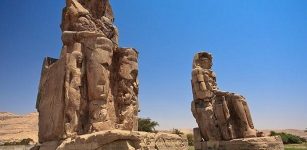 Colossi Of Memnon: Gigantic Stone Statues Guarding The Temple Of Pharaoh Amenhotep III
Civilizations | Jul 13, 2016
Colossi Of Memnon: Gigantic Stone Statues Guarding The Temple Of Pharaoh Amenhotep III
Civilizations | Jul 13, 2016 -
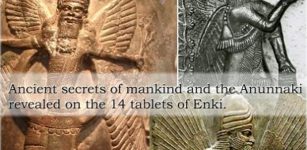 Ancient Secrets Of Mankind And The Anunnaki Revealed On The 14 Tablets of Enki
News | Jun 18, 2014
Ancient Secrets Of Mankind And The Anunnaki Revealed On The 14 Tablets of Enki
News | Jun 18, 2014 -
 On This Day In History: Admiral John Byng Charged With ‘Failing To Do His Utmost’ – Executed – On Mar 14, 1757
News | Mar 14, 2017
On This Day In History: Admiral John Byng Charged With ‘Failing To Do His Utmost’ – Executed – On Mar 14, 1757
News | Mar 14, 2017 -
 Cleveland’s Prehistoric Sea Monster Had A Mouth Twice As Large As A Great White Shark
Fossils | Mar 3, 2023
Cleveland’s Prehistoric Sea Monster Had A Mouth Twice As Large As A Great White Shark
Fossils | Mar 3, 2023 -
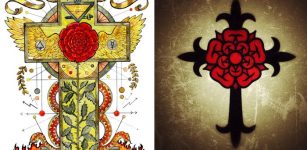 Rose Cross – Powerful Symbol That Existed Long Before Christianity
Ancient Symbols | Dec 3, 2017
Rose Cross – Powerful Symbol That Existed Long Before Christianity
Ancient Symbols | Dec 3, 2017



